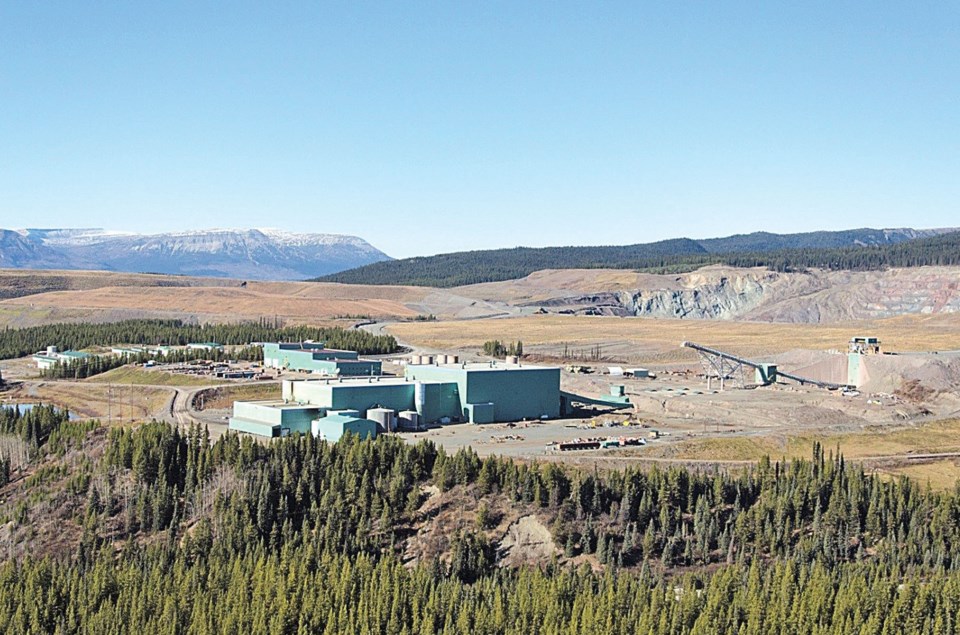With gold bouncing above a six-year high of US$1,600 per ounce and holding steady so far through the COVID-19 crisis, greater attention is now placed on two gold-mining plays in northern B.C.
One was envisioned in 2012 and approved two years ago but has yet to start; the second has received government and First Nations support and is also waiting for the mine owner to start construction.
The Blackwater gold mine, owned by New Gold Inc., will be an open-pit gold and silver mine on 4,400 hectares about 110 kilometres southwest of Vanderhoof.
New Gold expects the mine to operate for 17 years, and total mineral tax revenue over that time is currently estimated at $722 million.
In 2019, the mine was issued federal and provincial environmental assessment certificates but it must still go through the mine-permitting phase. When it will enter that process remains unknown, New Gold community relations adviser Val Erickson said in an email to the Prince George Citizen.
“Before entering into the mine-permitting phase, New Gold will continue to evaluate project sizing and processing options for Blackwater with the objective of unlocking additional value for the project from a financing and strategic perspective,” Erickson said.
As it stands, the claim has been expected to yield about 60,000 tonnes of ore per day with a net annual production of 22 million tonnes per year during the 17 years the mine is expected to last.
Constructing the mine is to take about two years and cost $129 million. That phase is expected to create 2,436 person years of direct employment, and once operating, it’s expected to support 396 full-time jobs per year and contribute $258 million to B.C.’s GDP annually.
Watching the progress closely will be 1,300 people who are members of two First Nations, the 243-member Lhoosk’uz Dené and the larger Ulkatcho. Under a benefit agreement with the provincial government, the bands will reap as much as $217 million, with the revenue split evenly between the two groups. Both are members of the Southern Dakelh Nation Alliance and the Carrier Chilcotin Tribal Council.
The two Nations have also entered into a separate agreement with New Gold Inc. that affords them direct participation in the Blackwater gold project.
“First Nations should share in the wealth from natural resource projects in their territory, and agreements like this one create a true partnership for economic development in the territory,” Indigenous Relations and Reconciliation Minister Scott Fraser said in a news release.
Centerra play
A planned underground mine in the far reaches of the Peace River Regional District could bring hundreds of jobs to northern B.C.
Centerra Gold updated the Regional District of Fraser-Fort George board about the Kemess Underground project on February 20.
The proposed mine has received all regulatory approvals and is waiting on Centerra Gold’s board of directors to greenlight construction, according to a company spokeswoman.
The Canadian mining company acquired the Kemess mines in the Omineca Mountains from AuRico Metals in 2018, and currently operates the Mount Milligan copper-gold mine west of Mackenzie and owns the shuttered Endako molybdenum mine west of Fraser Lake.
The proposed Kemess Underground copper and gold mine would be located six kilometres from the now-closed Kemess South open-pit mine. Between 1998 and 2011 when it closed, the Kemess South mine produced three million ounces of gold and 750 million pounds of copper.
The new Kemess Underground mine would use much of the same infrastructure as the former open-pit mine, according to Joanna Miller, Centerra’s sustainability and community development manager .
“This [Kemess Underground] is a fly-in, fly-out operation. [Most workers] will fly in and out of Prince George. We previously flew out of Smithers,” said Miller.
During the four-to-five-year construction period, the mine would employ approximately 575 people, she said. Once complete, the mine would require approximately 475 people full-time on two-week rotations for the 11-year life of the mine.
The proposed design is for a block cave mine, she said, which means tunnels will be dug 200 metres to 500 metres beneath the surface and miners will then dig up into the gold and copper deposit from underneath.
“It’s a bit of an interesting way to mine. There is no impact on the surface,” Miller said. “All that will be visible is a slight depression.”
Once operational, the mine will process 25 to 35 tonnes of ore per day, she said.
The Tsay Keh Dene Nation, Takla Lake First Nation and Kwadacha Nation, collectively known as Tse Keh Nay, have signed agreements with the province that will provide the First Nations a share of mineral tax revenues from the mine after it begins production.



